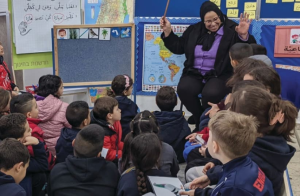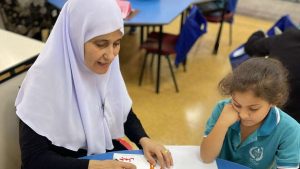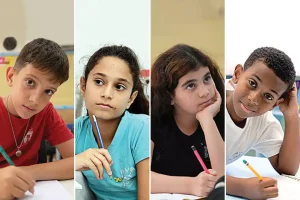By Rachel Malek Buda – April 1, 2025 – Makor Rishon
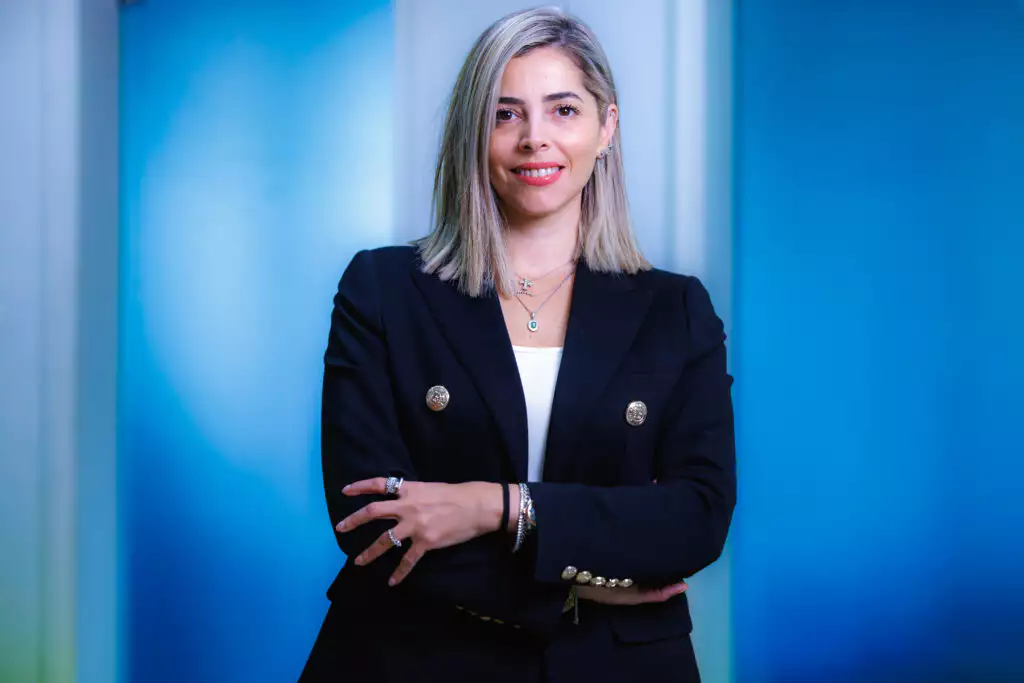
Jisr e-Zarka, by the sea. A second-grade boy spends his free time at the beach, sitting beside a fisherman. Books? Stories? He’s not interested. Reading is as foreign to him as a train schedule is to a street cat. Illiteracy leaves him stranded on the margins of the education system, one of many children at risk of dropping out of school.
That is, until a school staff member sits beside him and asks, “What are you interested in?”
“Fishing,” he replies.
“Then let’s write a story about fishing,” she says.
And just like that, the boy, who has never been excited by the written word, sees his world transformed into a story. Each day, he opens his book and reads his story. The pages become a gateway into the world of literacy – and a lifeline out of the path toward dropout, the streets, or even crime.
“If you want to destroy a society, neglect its education,” says Sally Awad-Asfour, Deputy Executive Director at the Israel Center for Educational Innovation (ICEI), and one of the leaders of the Tamkin initiative. “Who are the ones shooting guns in the streets? The 17- and 18-year-olds who have dropped out of the education system and have nothing left to lose. It didn’t have to be this way; things could have been different for them.”
Fifty percent of Arab youth in Israel don’t complete their high school matriculation exams. Their chances of entering higher education or finding stable, respectable employment are slim.
Against the backdrop of this reality, ICEI’s Tamkin initiative proposes a new approach. Unlike previous initiatives, which focus only on high schools, Tamkin (Arabic for “empowerment”), works with elementary schools, giving students a firm grounding in literacy skills. In an unprecedented investment of 33 million shekels over five years, in partnership with the Ministry of Education and the Ministry for Social Equality, ICEI is tackling the root cause of educational gaps in Arab society: the challenge of “diglossia” – the stark divide between the spoken Arabic used at home and the formal Arabic taught in school. ICEI’s Tamkin initiative currently operates in 15 Arab elementary schools across Israel.
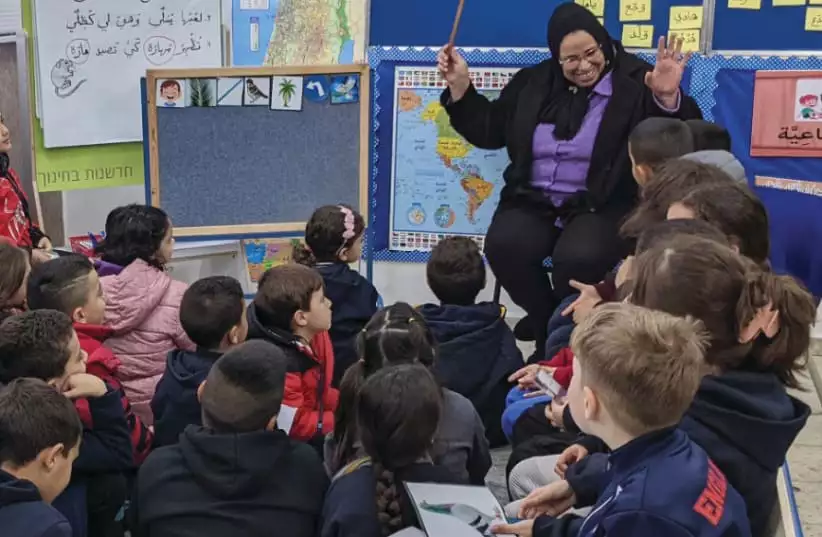
An Educator’s Journey
Sally Awad-Asfour, 43, who has been working at ICEI for six years, became ICEI’s first Deputy Executive Director just two months ago. Originally from Nazareth, Awad-Asfour now lives in Nof Hagalil with her husband Nahel, who holds a PhD in Law, and their three children: Noor (19), who studies in France; Nabil, a ninth-grade student; and Niel, who is in fourth grade.
Awad-Asfour attended St. Joseph’s School in Nazareth, a church-run institution, and holds a B.A. in Special Education, an M.A. in Educational Counseling from the Hebrew University, and an MBA from Bar-Ilan University. She also specialized in cognitive-behavioral psychotherapy and taught special education at the Oranim Academic College. Later, she became the principal of the first school in the Arab community specifically designed for students with learning disabilities and attention disorders, including ADHD.
Despite her extensive academic and professional experience, Awad-Asfour admits: “If I have to write a formal letter in Arabic, it has to be proofread. They’ll find a lot of grammatical errors in my writing.”
From Diagnosis to Reform
The gap between spoken and formal Arabic shaped Awad-Asfour’s early awareness of the challenges in Arab education. “I was a capable student, and yet, because of the way the language was taught, I never absorbed formal Arabic at a mother-tongue level,” she explains.
“If 10% of a school’s students need special education, that might make sense. But when I am told that 25% of students in a class need to move to special education? I realize the problem is not the students – it’s the teaching.”
The severe dropout rates within the Arab community bothered her from a young age. “It’s something innate in me; I always wanted to help people, and that is why I chose the field of educational counseling. There are students struggling – academically, emotionally, and economically – who are not receiving the support they need. Over the years, I became more and more aware of how deep and systemic these issues are.”
“When I became the principal of a special needs school, I discovered that most of the students weren’t truly in need of special education. They had learning disabilities, attention disorders, or simply hadn’t been given the tools to succeed. I learned that the education system doesn’t know how to cope with students who have difficulty with reading or attention; these students are quickly labeled and moved to special education.”
Awad-Asfour adds: “If 10% of a school’s students need special education, that might make sense. But when I am told that 25% of students in a class need to move to special education? I realize the problem is not the students – it’s the teaching.”
The Two Languages of Arabic
According to Awad-Asfour, Arabic is one of the most challenging languages in the world to learn to read and write. “It is the third-most difficult language, after Greek and Chinese, with more than twelve million words. It is a very rich language that can have two hundred synonyms.”
“What makes language acquisition even harder is the fact that Arabic is two different languages: There is spoken Arabic, used at home and in casual conversation, and there is formal Arabic, taught and spoken at school. The two languages only have 20% of words in common, so moving between the two requires a mental switch – it’s like the teacher suddenly switched to speaking Hebrew or English.”
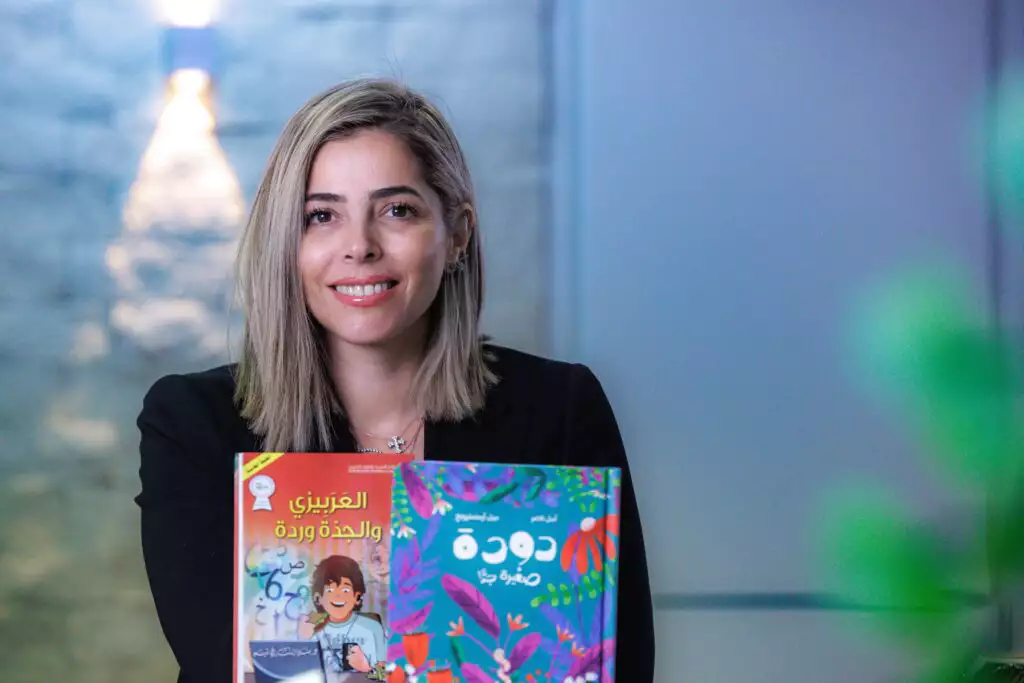
“To acquire formal Arabic, it’s not enough that the teacher uses it – students must also be immersed in vocabulary, stories, and a language-rich environment. But in Arab society, reading is not a common activity. The child doesn’t hear formal Arabic at home, and at school, all they learn is how to break down letters and understand simple texts. Their grasp of the language remains very basic. Even educated families may only read one book a year. That gap severely limits vocabulary—and cognitive development.”
“Since the beginning of the year, there have already been more than 50 murders in the Arab community. This doesn’t happen by chance. These are the same youth who dropped out of school. When someone offers them 2,000 ILS to shoot someone in the legs, they do it. They have nothing to lose.”
The issue, she says, runs deeper than vocabulary. “Depth of thought comes from depth of language. If children don’t develop a rich lexicon, their cognitive skills are stunted. And if they don’t master their first language, it becomes almost impossible to acquire a second language, like Hebrew. This is where many of our problems begin.”
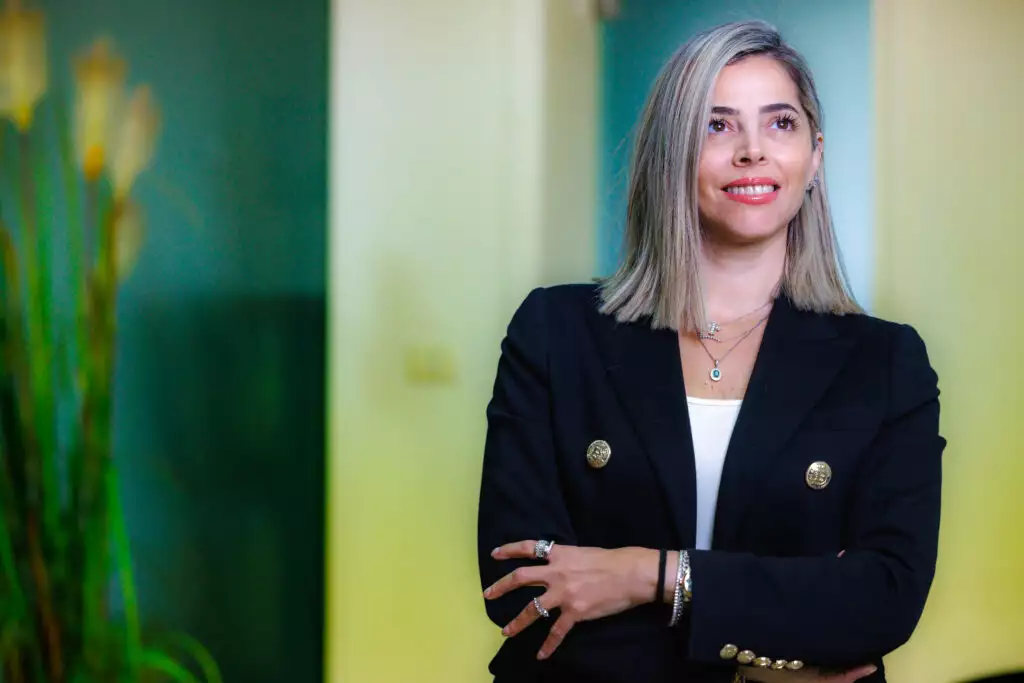
It is this language gap, she believes, that lies at the heart of the high dropout rate among Arab students. “More than 50% don’t complete high school with a matriculation certificate, and many drop out long before the twelfth grade. Why? Because the struggle with language begins in elementary school.”
“Israel has one of the most striking correlations between socio-economic status and educational achievement. More than 60% of Arab students come from low-income backgrounds. Without support and resources, their chances of success are miniscule. By the time they reach fourth grade, many are still illiterate. A child at that age who can’t read or write is actually already a hidden dropout. It will be very hard for him to learn Hebrew, science, or math in the future. The school may hold onto him with all sorts of extracurricular activities, but the expectation is that he will drop out.”
To this day, she notes, most resources are directed toward students who have already dropped out. “In recent years, the ministries have begun to shift toward prevention, including early childhood interventions and programs like Tamkin, which begin in elementary school. It’s much more effective to prevent the problem than to fix it later.”
Do you see a connection between dropout rates and street violence in Arab communities?
“Absolutely. We see severe violence every day. Since the beginning of the year, there have already been more than 50 murders in the Arab community. This doesn’t happen by chance. These are the same youth who dropped out of school. When someone offers them 2,000 ILS to shoot someone in the legs, they do it. They have nothing to lose.”
And you believe language skills will cause fewer instances of violence?
“Absolutely. Give a child the ability to read, to express himself, to succeed – and suddenly they do have something to lose. No child aspires to a life of crime. They end up there because of poverty, despair, and a lack of opportunity. But if we give children the experience of success, they can dream of a better future. When they learn to express themselves, they gain the ability to defend themselves, access their rights, and shape their own future. We are already seeing that transformation in ICEI’s pilot program in Arab elementary schools and in ICEI’s Tamkin program.”
The holistic transformation presented by ICEI’s Tamkin initiative includes equipping every classroom with a library of hundreds of books, redesigning classrooms with a cozy and inviting reading corner, and introducing a new role to the school – that of the “literacy coach.” The educational staff receives access to ICEI’s Medida data-collection platform, which allows real-time monitoring of student progress, so no child falls through the cracks.
The results speak volumes. First-grade assessments at the start of the 2024 school year indicated that only 20% were expected to acquire necessary language skills by the end of the year. Because of Tamkin’s interventions, nearly 70% of students acquired these reading and writing skills – more than triple the original expectation.
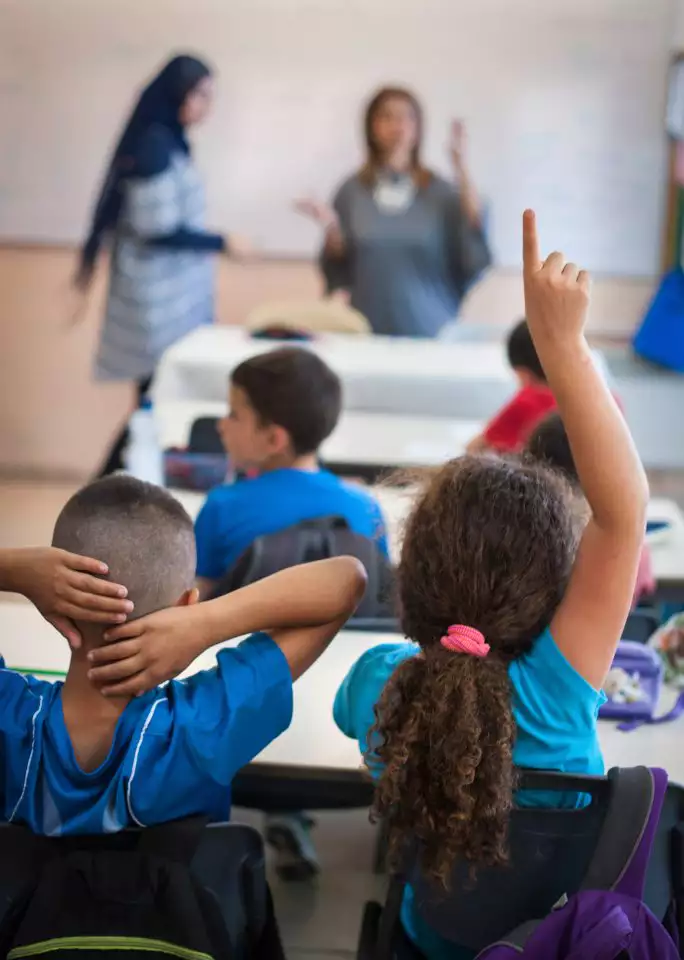
“Our model is based on research from the United States,” Awad-Asfour explains. “ICEI studied 50 successful schools in very difficult neighborhoods. Then we adapted what we learned and applied it to an Israeli context. ICEI’s founding mission was to support Ethiopian-Israeli students, who didn’t speak Hebrew at home, which made learning Hebrew at school very difficult. ICEI was so successful with Ethiopian-Israeli students that we expanded to additional communities. We studied the successes of our original model and adapted it to the needs of the Arab community, considering the issue of diglossia and cultural factors. We are constantly checking in with participating teachers to adapt and improve the model.”
Receiving government funding, however, was not guaranteed. “I won’t get into politics, just facts,” says Awad-Asfour. “There is a funding gap between Arab and Jewish students – that is known. But there is a five-year government plan for Arab communities to which resources were allocated. One of the key clauses in that plan, made two years ago, was regarding the development of language literacy. The government understood that without investing in this issue, the disparity between Arabs and Jews would only grow wider.”
Emotions Without Words
ICEI’s Tamkin initiative supports schools on multiple levels. “The most transformative innovation is changing the perception of professional development for teachers,” says Awad-Asfour. “There’s a common assumption that weak teachers can’t change. Even when they attend professional development courses, many return to the classroom and continue teaching the same way. That’s why we at ICEI introduced a new role within each participating school: the Literacy Coach. ICEI’s Literacy Coaches receive intensive training and work daily in the schools to train teachers in innovative ICEI-developed teaching methods. The Literacy Coach is selected from within the teaching staff of each school, transforming the school from the inside and making the impact sustainable even after the program concludes.
Another significant shift involves the classroom environment. “Each Tamkin class receives a library of 400 to 500 books, divided according to level of difficulty. For children just learning to read, there are books with only one word per page. For those progressing, there are more complex stories. Either way, every child reads every day.”
But in today’s digital age, can children still relate to books?
“Absolutely. In Jisr a-Zarqa – a very tough area – children are thrilled to be reading and excited to take books home. The principal told us, ‘I gave up on books years ago, but Tamkin has brought me back to reading.”
ICEI’s model creates ripple effects beyond the classroom. “It’s not just about literacy,” says Awad-Asfour. “Tamkin is creating social change. It has transformed communication between parents and children. Using one of ICEI’s methods, ‘The King/Queen of Reading,’ each student has a turn to prepare a story with their homeroom teacher and parents and present it to the class. They read, ask questions, and receive feedback. As a result, conversations between parents and children are now about books.”
That shift, Awas-Asfour says, even changes parent-teacher dynamics. “Some families used to call and threaten teachers. Now they call to ask, ‘When will my child be the King of Reading? What book should we choose?’ It’s an exciting and new kind of dialogue these educators and parents never experienced with each other before.” “Recess has changed too,” says Awad-Asfour. “There used to be fights in the yard. Now you hear students asking each other, ‘What book would you recommend? What did you think of that story?’ The school culture has changed.”
“Using the ‘King of Reading’ program, we encourage parents to sit with their child, listen to him, and read with him. Parents enjoy the stories they read with their children and often find their child’s book choices to be emotional. One girl chose a book about a new baby sister right after her own sister was born. Her mother told us the book helped her understand what her daughter was feeling, so that she could be more empathetic.”
And does it lead parents to also get into reading?
“I believe it does. First of all, thanks to Tamkin, parents have begun reading with their children. Parents are more involved with their children’s education and teachers are sharing with parents what is happening at school. Using the ‘King of Reading’ program, we encourage parents to sit with their child, listen to him, and read with him. Parents enjoy the stories they read with their children and often find their child’s book choices to be emotional.
One girl chose a book about a new baby sister right after her own sister was born. Her mother told us the book helped her understand what her daughter was feeling, so that she could be more empathetic. Reading has a therapeutic role: When children feel lonely, scared, or angry, they choose books that reflect those emotions – and we work on those emotions.”
Language development, Awad-Asfour adds, is essential for emotional development. “In Arab society, expressing feelings can be difficult. There’s often a lack of vocabulary for it. Through Tamkin, we begin in first grade teaching how to listen, how to conduct a dialogue. These skills must be taught – how to look someone in the eye, really listen to them, and feel what they’re going through.” We implement this method of dialogical conversation every day. The stories allow us to work on expressing emotions: what do you do when you feel angry? Who do you turn to? How do you behave? Do you act out, share, withdraw? We raise awareness of behavior and build emotional intelligence alongside academic skills.”
“There’s a lot of resistance in the field,” she says. “Managing a class of 34 students in small groups instead of frontally is not an easy task – it’s overwhelming for many educators. But even those who have been in the system for 30 years manage to change their perception once they see the effectiveness of the Tamkin model.”
Every Child is A Leader
According to Awad-Asfour, one of the most striking outcomes of ICEI’s Tamkin initiative is the transformation in classroom culture and student responsibility. “When you walk into one of our participating schools, it feels like a different world,” she says. “You see schoolbags hanging neatly outside classrooms, students working in groups, structured meetings happening inside.”
During the first month, the program just focuses on teaching students about order, responsibility, and time management. Over the course of the year, every student gets a chance to serve as a group leader – making decisions, guiding their peers, and learning to take initiative. “In this way, every child becomes present, every child matters.” The results are evident. “Teachers report that since implementing ICEI’s Tamkin model, they no longer waste time on discipline. Everything is planned, consistent, and clear. Phones are not allowed in class, and every student has a designated seat. The atmosphere is calm and purposeful.”
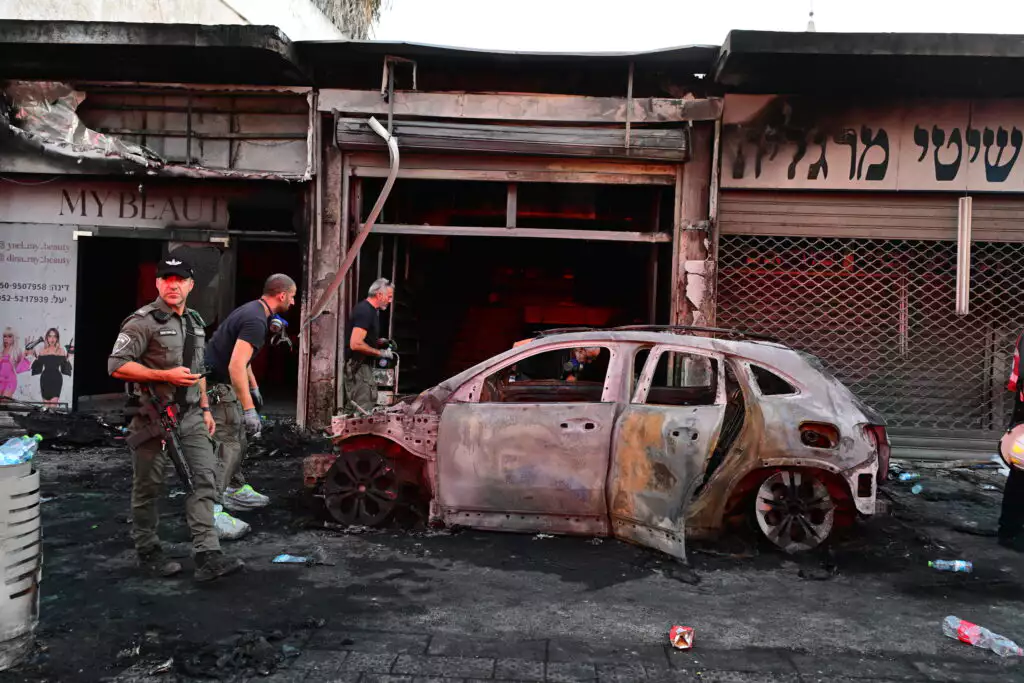
Awad-Asfour acknowledges that the hardest part of the Tamkin process is in working with the teachers. “There’s a lot of resistance in the field,” she says. “Managing a class of 34 students in small groups instead of frontally is not an easy task – it’s overwhelming for many educators. But even those who have been in the system for 30 years manage to change their perception once they see the effectiveness of the Tamkin model.”
Awad-Asfour recounts how some students who were previously considered for Special Education have started to thrive in the classroom under the new approach. “They’ve found their voice,” she says. “And the teachers are the ones seeing that change firsthand.”
What About Hebrew? How important is it to the students’ future success?
“Hebrew is a serious obstacle,” Awad-Asfour explains. “My daughter finished high school with honors and speaks fluent English, but she chose to study in France just to avoid dealing with Hebrew. As I’ve said, if you don’t have a strong foundation in your first language, it’s very difficult to acquire additional ones. Arab students must navigate spoken Arabic, formal Arabic, Hebrew, and English – it’s a tremendous burden.”
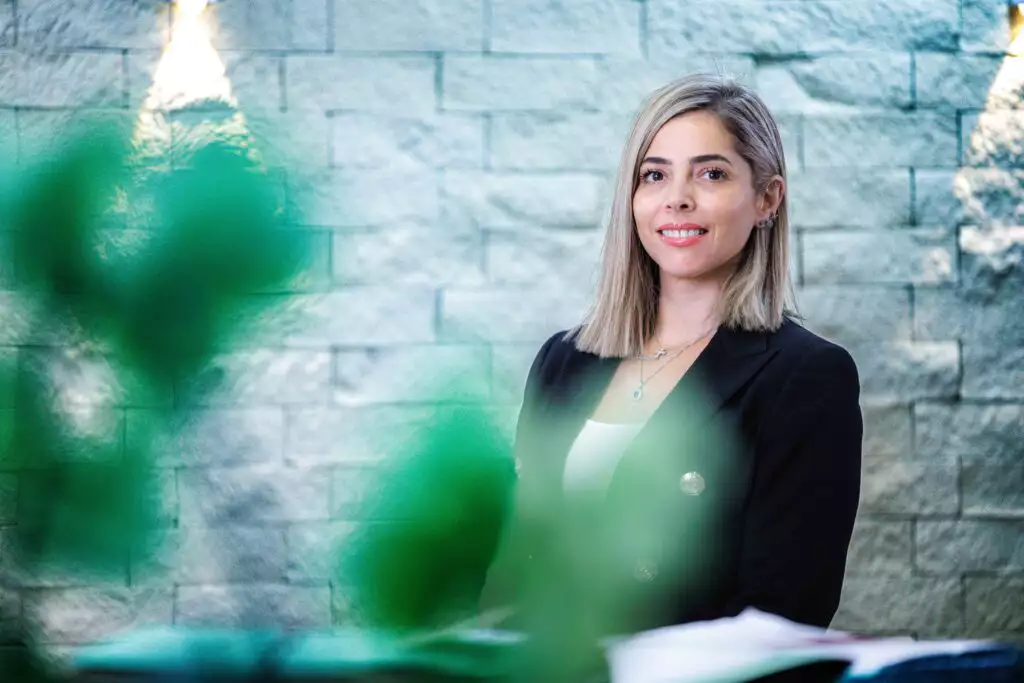
Awad-Asfour believes that the system for teaching Hebrew in Israel must undergo a real change. “Israel is 30 years behind in language instruction,” she says. “Modern systems like CEFR (Common European Framework of Reference for Languages) emphasize the importance of connection and motivation. However, Arab schools in Israel teach Hebrew without context. My son, for instance, had to memorize 20 words for a test – he remembered them for the test, and forgot them the next day. The words were disconnected from his daily life and from his passions.”
The Jewish educational system also suffers from numerous flaws. Could the model also be suitable there?
“The Israel Center for Educational Innovation also operates in 30 Jewish schools, as well as in mixed Jewish-Arab schools that have their own complexities. We have an ICEI network school in Ramle where 60% of the students are Arab. We had to figure out how students whose mother tongue is Arabic could succeed in a school environment where Hebrew is the primary language. But it’s not just Arab students – there are children of immigrants, Russian-speaking families, and children of foreign workers. Every school has its complexities, including those in the Jewish educational system.”
Despite the immense challenges, Awad-Asfour remains optimistic.
“A child who experiences learning through the Tamkin model is set on a different path,” she says. “It will be easier for him to learn the language, succeed in school, and integrate into society.” Not long ago, she visited one of ICEI’s participating schools, and the principal shared something that stayed with her: “She told me, I used to think the phrase ‘every child can’ was just a slogan. Today, I can see it happening in our classrooms. I see our dream being realized.”

